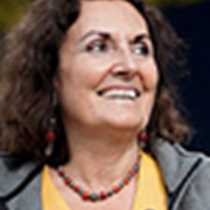Tallinn, Estonia
We arrived this morning in the beautiful city of Tallinn under a light drizzle that gave the cobbled streets of the old town a silvery sheen. Our tour started with a visit to the famous grounds where 300,000 Estonians gathered 20 years ago to sing their way to freedom. From there we drove to, Toompea Hill, the highest point of the old walled city which is crowned by the magnificent Russian Orthodox Cathedral built in 1900 during the tsarist period and dedicated to the Medieval hero Saint Alexander Nevsky who successfully stopped the eastward advance of the Teutonic Crusader Knights into Novgorod, now part of Russia.
Just a few blocks away we entered a small square graced by the 13th century Cathedral of Saint Mary the Virgin in Tallinn, also known as Dome Church. Originally built by the Danes it is the oldest in the Estonia. It is also the only building in this part of the city which survived a great fire in the 17th century. In 1561 it was rededicated from Roman Catholic to Lutheran and now belongs to the Estonian Evangelical Lutheran Church.
Inside, the cathedral is filled with elaborate tombs of the mostly German nobility, who were organized into various orders of knights. The whitewashed walls are cluttered with heavily ornamented “Epitaph Coats of Arms” decorated with gilded lions, crowns, colorful banners, and ghoulish armor clad heads adorned with emblems and crests indicating rank and family history.
From one of two outlooks on Toompea Hill we were presented with a panoramic view of the old city where the German merchants built great fortunes trading salt along the Baltic. Descending along a steep narrow street we passed through a thick gate in the internal wall that separated the upper and lower city, indicating that relations between the local nobility and the merchants were not always totally cordial.
In the lower town we entered the scenic Main Square with its 15th century Gothic Town Hall with iron shackles decorating the outer walls, reminding us of a less gentle age. It is considered to be the best preserved example of this type of public building in Northern Europe.
Here, all the groups were divided up among different scenic restaurants for a snack of cake and mulled wine. Our group was served in the upper story of the Pepper Sack, a beautifully preserved Medieval storage house with dark wooden ceilings and roughhewn tables.
In the afternoon many of us heard a moving eyewitness account of the Singing Revolution from participants Anne and Thomas Raudberg. The rest of the afternoon was spent pleasantly exploring this scenic and friendly city which after years ruled by Danes, Germans, Swedes, Russians, Germans (again!), and finally the Soviets, it has finally emerged as a proud member of the EU and in January will even be converting its currency to the Euro. We wish them well.




